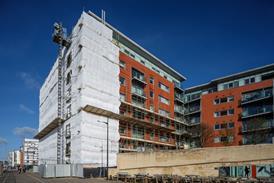Sarah Cookson from Switalskis Solicitors outlines how to make an application for adverse possession with registered and unregistered land, and highlights key issues solicitors need to consider

Adverse possession allows a person to acquire land based on their possession of a piece of land or property. It is based on the Latin term animus possidendi – an intention to possess.
Has possession taken place?
First you need to establish whether possession has taken place in a way that would satisfy the requirements of the HM Land Registry (HMLR). Being able to satisfy these requirements is something I have found gets lost when discussing possession with clients. The bottom line is that there must be an intention to possess, and that possession must be to the exclusion of all others – so things such as erection of fences / walls and spending monies on maintenance are critical to an application. Only if a client can show possession should you move to the next stage in the process.
If possession can be shown, you will need to make an application; this varies depending on whether the land is registered with HMLR. At this point, you will need to carry out a search of the index map (SIM).
How to make an application
When the land isn’t registered
Where the land isn’t registered, it is necessary to show adverse possession for a period of 12 years or more (section 15(1) of the Limitation Act 1980). Where the land is crown land, this is extended to 30 years. This includes land held by companies that have been dissolved.
Use the First regulation: application (FR1) form, together with a plan of the land (to ensure the plan is compliant, see HMLR’s Practice guide 40) and a Documents list (DL) form listing the supporting documents.
Supporting documents can include:
- photographs, where the property in question is land
- bills paid for maintenance of the property / land, erection of fencing, and so on
- council tax and any other bills paid for occupation of the property
- statutory declaration in support of the adverse possession, using the Adverse possession: statement of truth (ST1) form
- SIM
- land charges search.
When the land is registered
The Land Registration Act 2002 (LRA), which came into force on 13 October 2003, reduced the time limit for adverse possession to 10 years, and introduced a new process using the Adverse possession: registration (ADV1) form.
Using form ADV1, you are given several options as to how to apply. First you must decide whether you are making your application using:
- Paragraph 1 of schedule 6 to the LRA – a person must have been in possession for ten years ending on the date of the application.
- Paragraph 6(1) of schedule 6 to the LRA – used when a previous application using paragraph 1 of schedule 6 has been unsuccessful, and you cannot apply until a further two years have passed.
This application is procedural and easy to follow.
Grounds for the application
After deciding which class of application it will be, you need to confirm the grounds on which it is being made:
- Paragraph 5(2) of schedule 6 – it would be unconscionable because of an equity by estoppel for the registered proprietor to seek to dispossess the applicant, and the circumstances are such that the applicant ought to be registered as the proprietor.
- Paragraph 5(3) of schedule 6 – the applicant is for some other reason entitled to be registered as the proprietor of the estate.
- Paragraph 5(4) of schedule 6 –
- the land to which the application relates is adjacent to land belonging to the applicant
- the exact line of the boundary between the two has not been determined under section 60 of the LRA
- for at least ten years of the period of adverse possession ending on the date of the application, the applicant (or any predecessor in title) reasonably believed that the land to which the application relates belonged to them, and
- the estate to which the application relates was registered more than one year prior to the date of the application.
There is no set time limit for how long HMLR will take to deal with land registration applications, but it is possible to make a request for an application to be expedited where the delay would cause financial hardship.
HMLR’s practice guides are an invaluable resource:




















